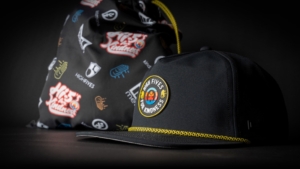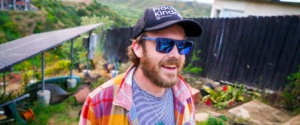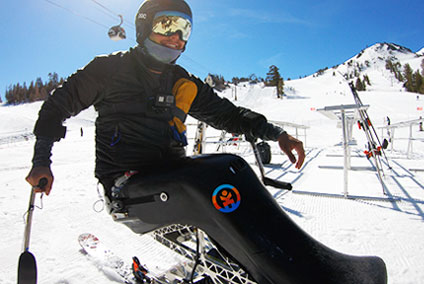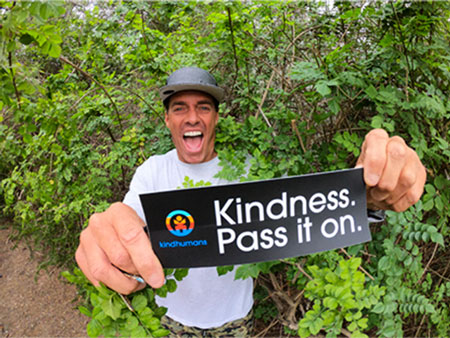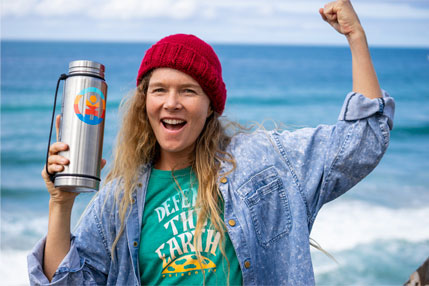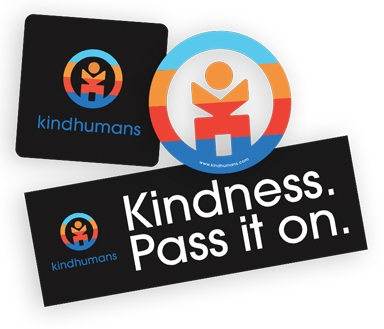
The Journey to Kindness Starts Within Series
Wellness ExpertThe Journey to Kindness Starts Within Series
Natasha Loeffler-Little is a passionate teacher of Pilates, nutrition, and mindfulness. In this series, Natasha shares her background, pieces of wisdom, and tips for how to keep your mind and body healthy. – KH
Part 1: It Starts With an Internal Choice
We’re living in an era with complex supply chains and advanced technology. We have access to knowledge and education beyond our grandparents’ dreams.We can take advantage of available resources to turn aspirations into reality. We can also make great changes individually using our own talents. In other words, we can succeed at almost any task we set our minds to.
We strive to optimize our ability to be kind humans by leaving this earth better than we found it. In order to accomplish that goal, it takes a lot of strength amongst an extensive and united community. But we also have to look inward. So when we’re urged to live a more sustainable life, amplify kindness, and inspire individuals and entire communities, we need to ask ourselves: How can we nourish our minds to make sure we contribute to this cause with our full potential?
“The exact moment I knew the answer to change, I knew it had to start within me.”
I wasn’t the best big sister. Sure, it looked good on the outside when I would take my brothers to the park in the summers and make us lunch while my parents were at work. You would have thought ‘Natasha has friends and lots of long hair, and she seems just fine’. On the inside, I was boiling. Constantly. And I was an impatient and angry older sister. Looking back, my demeanor as a big sister was the barometer for the way I was truly interacting with the whole world. No one could hear the constant yelling in my house, the irrational paranoia from my father and grandmother who were both survivors of two different wars, or the money and time spent on the doctor for my ongoing allergies and issues with strep throat. All of these stressors accumulated and I began to resemble my environment – a red, hot ball of fury ready to burst at any moment. It seemed that I wasn’t a positive influence on anybody and I even made my brothers afraid of me.
I believe each person has a story to tell. Something happens to a person and he or she gets an opportunity to heal the pain and emerge as a more evolved and educated person as a result. When I was 14, I met Tracy. About five years before we met, she was homeless in San Francisco, using drugs, and she owned nothing. By the time we met, she had cleaned herself up and gotten married. She found her own spiritual path, had a job, and was sober. I still don’t know what prompted her to have lunch with me and share her story of recovery in detail. She shared her fears of being raped or beaten on the street. I saw her cry as she remembered having to beg for money and food. It was at her dining room table that I realized that the course of how I would live my life was going to change. “You always have a choice,” she said.I remember replying that my grandmother had survived WW2 in Germany. She responded, “You always have a choice”. I said again, “But my Dad survived Vietnam for three tours”. And again Tracy said, “You always have a choice”.
We all have a choice to react. In hearing one story of a woman who not only overcame hitting rock bottom, but also survived sharing the story out loud, I realized that I had a choice too. I could ask more questions about realities at my house and imagine other options. I could reframe my story and emerge as someone else living in an entirely different way. I went home that day and started down a new path. Looking back, the most incredible aspect of the changes I made is that my body knew to look at the simple everyday things, like what I was eating and how I was moving in the world. That was the same year that I started to understand my food sensitivities and related health issues and when I evaluated how serious I was about playing softball.
My experience in my path to wellness amplified that it’s a mental and physical process. The choice begins in the mind, and when the body feels balanced, it allows the mind more space to make choices. The cycle cannot be broken between the two. In my own journey, I’ve become a Certified Nutrition Educator, Certified Nutrition Consultant, and Qualified Fletcher Pilates Teacher and now I own Studio 4 Pilates. More importantly, every single credential I earned, I ended asking “How can I make this available to others so they don’t have to go through all these hours to learn this?”. My history was limited only by imagination and possibility. One person made me think differently about how to retell that story with a choice. My education and experience have made me feel empowered because I have answers. I became a more compassionate big sister when I had a better handle on my mental and physical health. That is my goal – to make it simple to learn how to take care of yourself through the Pilates principles and whole foods nutrition so that you know which questions to ask and what choices to make to serve yourself.
If it’s possible for me to play with three pillars of movement, nourishment, and self-awareness to embolden bigger change for our planet and serving others, is it possible for you to invest in the long game of your whole self too? In this series, we’re going to explore that together.
Part 2: Let’s Tune In to Take Action
We left off in the last part of this series knowing that we always have a choice. Starting with your mindset, you always have a choice. That choice leads you to make decisions with the world you live in. When you feed and move your body with the intention of promoting health, your mind becomes more balanced and free to do amazing things.
In Pilates, we have a principle called awareness, where you take note of what’s happening around you and within yourself. Awareness is an idea that’s important to Pilates in addition to storytelling and mindfulness practices. In group Pilates classes, we teach awareness by using the rhythm of how people are breathing and the pace they are flowing through movement. We test awareness by asking students to synchronize their movement by first listening to their neighbor to observe how fast they are breathing and with what beat. We ask them to use their peripheral vision to study the room and use the feedback for the flow of every movement. To try this at home, you can put on some music and dance. Pick the music you love, find the rhythm, feel the beat, and snap or dance your way to a flow that goes through your whole body. Let go of judgment of how you look and practice rhythmic movement.
You challenge yourself when you ask your brain to take in an entire room of inputs for your movement before plowing forward with your own plans. With the challenge comes additional demand to integrate ideas to be stronger. You might have to slow down and find more control in your body. You might have to speed up and find more coordination and strength. Wherever you are in your journey, you will find benefit in practicing awareness to bring you to a centered place with the community collective. You will become stronger.
Strength developed in group classes or retreats is one way to grow your awareness. It can also be done right from the chair you’re sitting in now – alone. Practicing awareness in groups and alone is a great way to find what works for you and develop new reaction patterns to tune in when you’re stressed, tired, or upset.
With compassion and attention to detail in a given moment, it is possible for you to find joy in this journey of your greatest potential. You’ll see more of your own humanity and in turn, see it in others.
“You’ll find that what’s inside you is a strong ability to amplify so much kindness and compassion in our world.“
Part 3: Let’s Eat to Be Zesty
Look around you and think about what health looks like. Think back to your last few days, weeks, or months. What words would you use to define ‘healthy’?
I describe it as having enough energy, feeling able, and not over or under-reacting. Joe Pilates described it as “performing our many and varied daily tasks with spontaneous zest and pleasure”.
Having an understanding of the excitement of “spontaneous zest and pleasure”, as a Certified Nutrition Consultant I can tell you that your daily practice of eating is an accessible opportunity for you to energize your sense of self and self-love.
Eating for your health isn’t a one time hit of energy. If you eat the candy or tub of ice cream, then you’re going to crash within the hour and feel worse than when you started. The real juicy choices for eating for your health come from eating to refill nutrients in your body and thoroughly enjoy the ripest and freshest-tasting foods.
The Eating for Health ® model is one of the easiest ways to understand using food to nourish our whole body and mind. It’s an approach, not a diet, to choose what you eat. We learn how to choose a variety of foods, maximizing the intake of macronutrients, micronutrients, and phytonutrients. And perhaps most importantly, we empower you to establish a caring, compassionate relationship between yourself and the food you eat. This is the compassionate method we use at Studio 4 with our nutrition consulting and group wellness options. We have seen over and over that it’s exciting people to make lasting change to feel their best – right now and for their entire life!
What would it look like to eat to support your body and mind? Here are three ideas to try:
- Get to know a local farmer. Knowing where your food comes from and how it was prepared will help you make a decision about whether you think that the way it was grown is in line with what you think will promote health in your body. By supporting a local farmer, you’re able to redirect funds from monocrop conglomerates towards more biodiversity in our soil and higher nutrient-dense foods. CSA (Community Supported Agriculture) boxes and farmers markets are also great options.
- Choose foods that have only a handful of ingredients or ingredients that you can read without Googling them. This really means that we look for foods that we know the origins of or that we have a high level of confidence that they are produced in a way that is good for us and good for the environment. When we follow this tip we can strip out most foods with added chemicals and those that are overly-processed. That means more fiber, more nutrients, and more love for ourselves and the planet!
- Simplify your cooking system. I love a really complex recipe that tastes amazing, but not every day. I also love eating at restaurants because I don’t have to do the work and I enjoy the love put into the food that someone else want to share with me. But for the average day, I need a simple system to keep me on track. I personally like to plan a set of carbohydrates, protein, and vegetables to have ready for the week so I can scoop and re-heat a balanced meal if things are overly busy.

Part 4: Simple Moves to Open Your Body and Mind
Think back to the last time you injured yourself and couldn’t do something you loved. Think back to the last time you had a paper cut and basic life skills became painful every time you had to use that finger. That pain and recovery process is often the time we will notice how important the full range of motion is. We learn to appreciate being able to do what we love. We remember that we are humans and that humans are designed to move. Constantly.
I became a Pilates instructor partially because I like the work, and mainly because the human body is an amazing specimen. When you’re learning to teach movement, you also have to learn anatomy. One of the fundamentals aspects is how our body parts work together to initiate and control movement. Every seemingly simple action requires a complex chain reaction throughout your entire body to keep you in balance. On the flip side, when you don’t move, your body works hard to stabilize itself. It senses a need to brace and lays down collagen in fibers, causing us to feel stiff and inflexible. On the double downside, when you feel stiff in your body, you also tend to feel stiff mentally and tend not to want to act on your change. This is partially due to the brain and body being so completely interwoven. Hey, who wants to get up and make a change for the world if they literally feel too stiff to move?
Back to the good stuff though – one of the most awe-inducing properties of our bodies is that we can reverse the effects of not moving by making very small adjustments. Put plainly, you don’t have to sign up for another class or push yourself to some insane limit. To level yourself back up to a baseline of health, you can focus on just a few simple flexibility practices throughout your day.
We’ve put together a few movement patterns you can try right from your chair! Check those out here: https://youtu.be/U2Zkgbmfwfw
In Pilates, each session works to strengthen and mobilize the spine. The spine is considered a foundation for health because all movement really starts from your core. With a spine that feels supple, we find that movement becomes easier. A lot of our daily life works just one plane of motion and that is the front to the back. For example, you walk forward most of the day. When you’re looking to create more flexibility and move to open the body, you want to hinge, rotate, and bend to the side too. Variety in our diet, movement, and activities makes life more interesting and has many benefits!
Of course, once you start to develop habits surrounding movement, it is highly recommended to continue on the journey by trying new forms of exercise. The options are endless, so find things that energize, excite, and inspire you to get up, get out, and get moving!

Author Profile

Natasha Loeffler-Little is an educator in whole-body and mind health through Pilates, nutrition, and self-awareness. She is a Certified Nutrition Consultant, Qualified Fletcher Pilates teacher, and owner of Studio 4 Pilates LLC. Her passion is teaching. Her specialty is making complex concepts simple to understand and fun to practice.
Her mission is to show more people how to rely on themselves to be healthy and to live with ease and balance. She teaches Pilates, nutrition education, and mindfulness virtually and at her studio in Half Moon Bay, California. She resides in Half Moon Bay with her husband, daughter, and her zoo of domestic animals.



